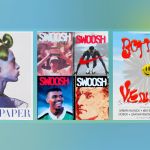
New Brand Journalism: how is branded content changing in the fashion industry?
Brands become publishers again, adding a new space to their digital ecosystem
April 8th, 2021
Branded content marketing, native advertising, sponsored content. These have been the keywords of digital publishing in the last ten years: various definitions that have filled the mouths and notebooks of the notes of accounts, brand strategists and social media managers. Driven by the motto "Every Company is a Media Company", the fashion industry and the magazine sector were the first to experiment with this mechanism that in its essence was a win-win for both parties: brands came into direct contact with a desired audience quickly directly and employing few resources, magazines and influencers managed to keep their identity intact and to make sustainable a business model that until then could not to monetize online presence and reputation.
The branded content applied to Instagram launched the influencer industry, but from the point of view of blogs and magazines it had to be the magic formula to save digital publishing. Today, however, six years after the boom of this marketing model, brands have changed and with them online communication: many are starting to create in-house magazines for editorial content. Gucci Stories, Issue by Bottega Veneta, Lifewear by Uniqlo, magazine by Louis Vuitton are just some of the examples of new brand journalism that complete - together with social media and e-commerce - the digital ecosystem of a brand. This is a natural evolution for the fashion industry, at a historic moment when brands are first producers of values and then of clothes and feel the need to have digital spaces less restrictive than an Instagram profile or their e-commerce where they can show the behind the scenes of the brand, have the opportunity to give substance to slogans of sustainability and inclusiveness. It's not the first time that it actually happen: has every trend it is a revamping a wave of brand magazine born in the 00s.
Brand-publishers: from the first wave of blogs to branded content
It sounds strange but there has already been a historical moment when brands were also publishers. From 1996 to 2000 Nike published Swoosh, a magazine - obviously paper - that first tried to build a bridge between style and sport. The curated graphics, the well-written and valuable content positioned the magazine as a small cult for fans of the brand. However, it was clear that it was a secondary project for Nike that in those years invested a lot in film ADVs and sponsorships (Ronaldo, the phenomenon was the main testimonial). For these and many other reasons, Swoosh's experiment lasted just four years, but its legacy was collected in 2004 by Acne Studios, which founded Acne Paper. At the beginning of the millennium, fashion and luxury brands focused their marketing investments on the classic media buying model in industry magazines from big magazines such as Vogue and Vanity Fair to weekly newspaper inserts. This happened because the target audience had a higher average age than the current one and above all there was not that dispersion of channels that brought the internet and social networks and had no interest in making unconventional communication.
The 15 semi-annual issues directed by Acne Paper's Thomas Persson were a bolt from the blue in the fashion publishing market. It was in fact a world-class magazine whose quality was recognized by industry insiders, Eric Wilson wrote in the The New York Times: "Acne Paper, has also become a cult hit, like Andy Warhol's Interview in the early days, for its insider perspective on the most obscure corners of fashion and its wealth of big-name contributors".
Acne Papers, however, was born before 2008, before the blogging boom. While brands looked at print, in newborn blogging sites there was the creative ferment of streetstyle in digital version: lookbook.nu, MySpace, Netlog and many other online galaxies became the creative humus from which streetwear came out. The fashion industry was sensationally slow to see the potential of fashion blogs that went from a few thousand views to being Chiara Ferragni in less than five years. There were few sporadic brand-blog attempts: one - against all odds - was Dolce & Gabbana's The Swide, which failed to capture the public's attention. A few years later, other brands tried with hybrid models, creating an online magazine apparently independent but foraged by a brand: this was the case of Satellite Voices created by Dazed&Confused for Swatch or The Towner sponsored by Moleskine.
Starting in 2014, with Instagram reaching 150 million active users every month and the fashion system creaking under the weight of streetwear, here is where began branded content model as we know it today. Fashion and luxury brands needed to communicate with a much younger target that did not use traditional channels and whose language or aesthetic codes they did not speak above all. On the other hand, online publishing - the evolution of the first wave of blogging and still practically ignored by traditional journalism - was familiar with social media and the new street aesthetic, but needed to find more stable revenues than digital advertising to make the business sustainable. This is how the era of editorials and - or advertorial - and sponsored news began, as you might have read in this magazine as well. Branded content was a success mainly because of its tailored nature: depending on the needs of the brand it could vary based on the product, on the heritage of the brand or on a campaign. The magazines that best interpret this shift in digital fashion publishing were Hypebeast and Highsnobiety who managed to outpace Vice and other historical magazines that were not quick to adapt to time, thanks to the culture rather than the industry that allowed them to evolve and space industries and aesthetics.
Even on a creative level, branded content influenced the fashion industry: power grew in the hands of independent creative agencies specializing in cool hunting that facilitated the emergence of young creators. On the other hand, critics pointed out that it was another element that contributed to the cultural homogenization of taste within the fashion industry. In addition to the passage of time users notice a sponsored post, lowering the degree of engagement, a survey found that, only between 2011 and 2016, the average number of posts published each month by brands on their corporate sites or blogs had increased by 800%, while the average number of average interactions per post, in contrast , down 89%.
The new brand journalism
Over the past five years, the creative and fashion industry has changed profoundly. Thanks to the transformations that took place in the industry and the work of connecting many magazines, the communication gap that existed ten years ago between public and brand has been drastically reduced. The need is to communicate directly with the public, bringing branded content that lands on magazines within their own digital space, whose name is yet to be defined (brandzine could be, ok).
Among the examples mentioned above, Uniqlo with its LifeWear and Gucci with STORIES are the best examples at the moment. In terms of content, practices differ: LifeWear - which is both digital and paper - alternates a selection of essentials signed by Tyler Mitchell with the illustrated series of Recycled Journey articles that shows corporate sustainability standards up to classic editorials. There is little talk of product and a lot of values, involving talents close to the brand in the creation and amplification of content; the tone of voice is informal, from magazine and not from corporate communication. Gucci, on the other hand, has chosen a different approach to STORIES: you can find a little bit of everything from dry news about products to behind the scenes of the countryside, all in a very dry and corporate tone.
Both approaches, however, seem to follow the approach of SSENSE or Mr Porter, both ecommerce magazines that have boomed in recent years. The goal for new brandzines is to offer quality content but above all relevant for users, avoiding overlapping with the work of independent magazines, which at the same time must change skin, evolving from cool hunter to curators, selecting every day the most relevant trends and facts not only remaining in the field of fashion but following the principle of cross-sectorality.

































































































